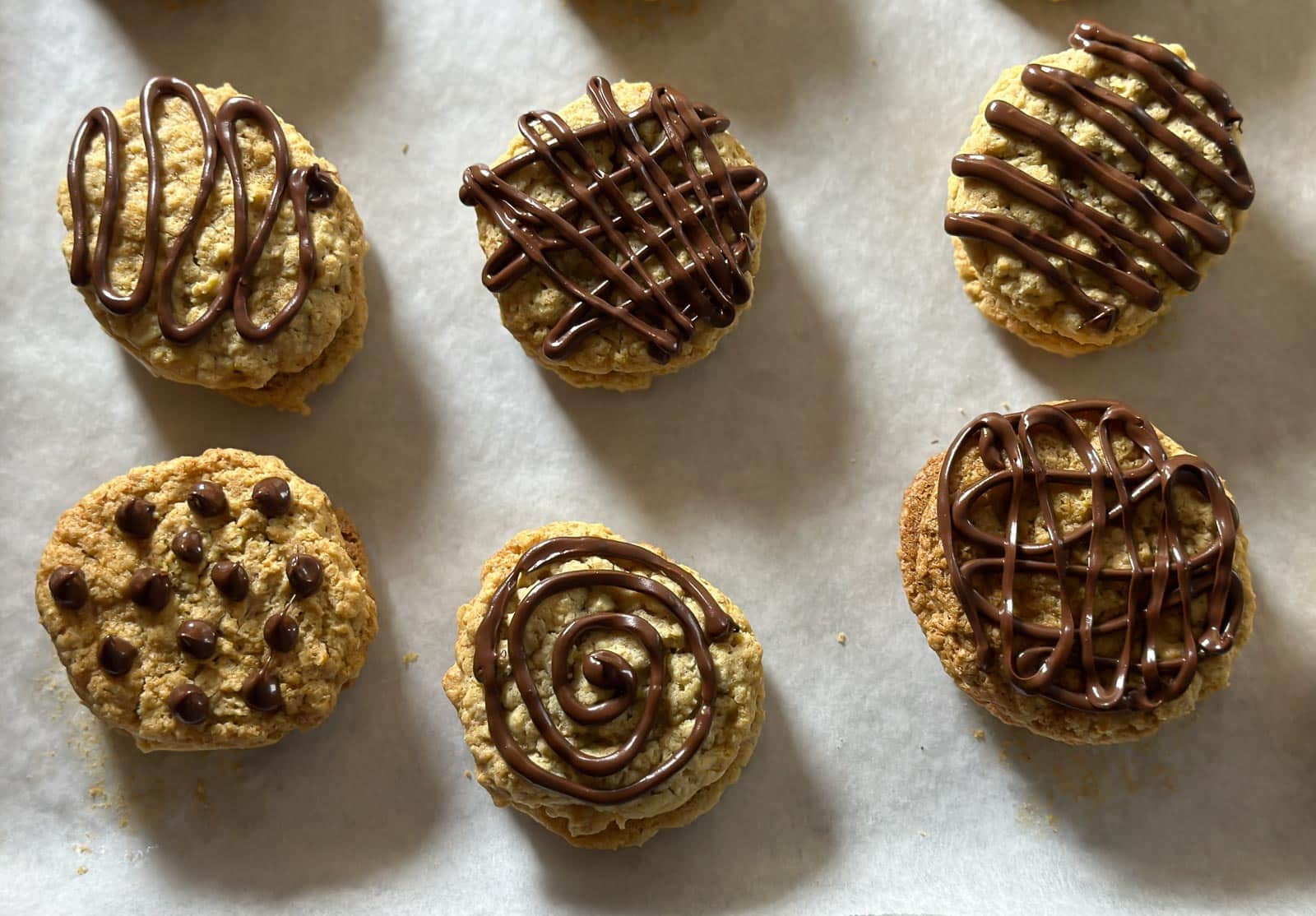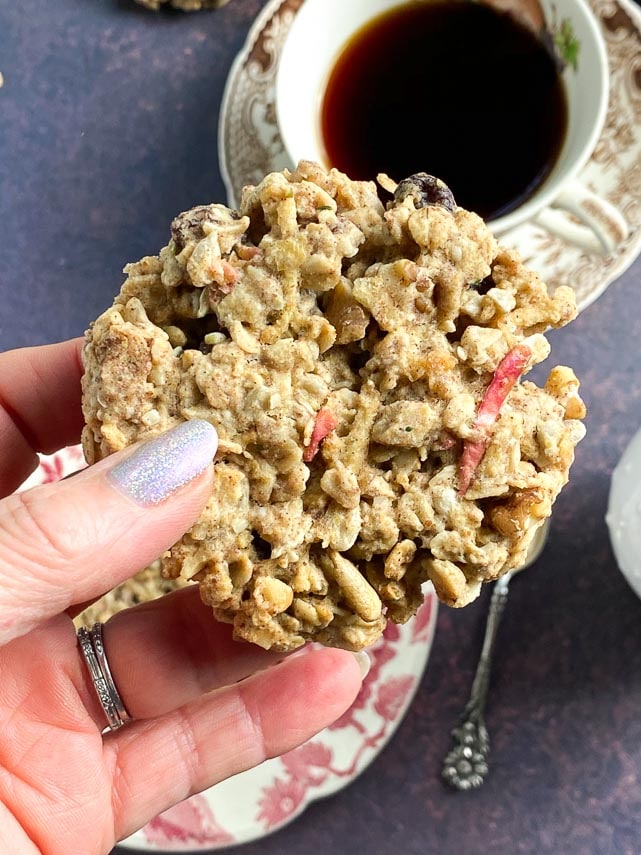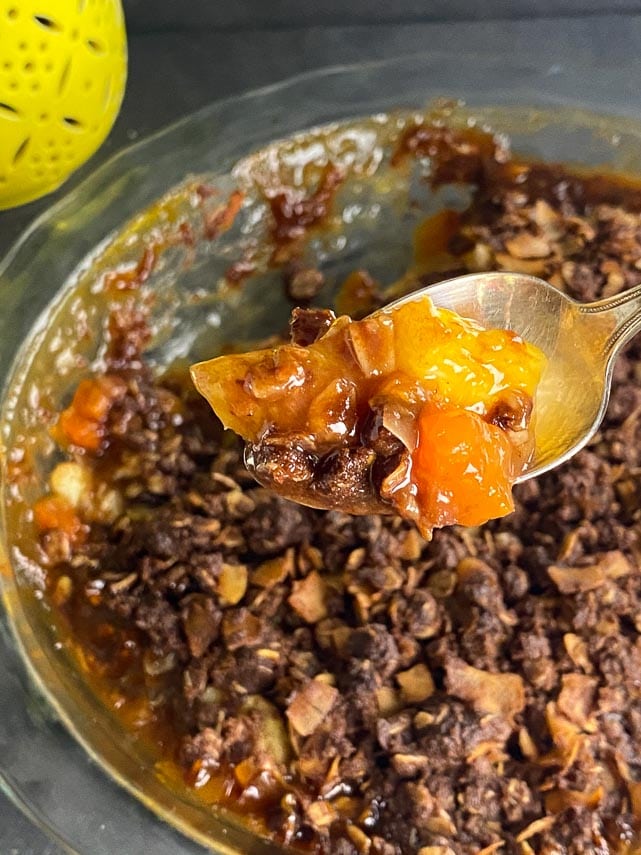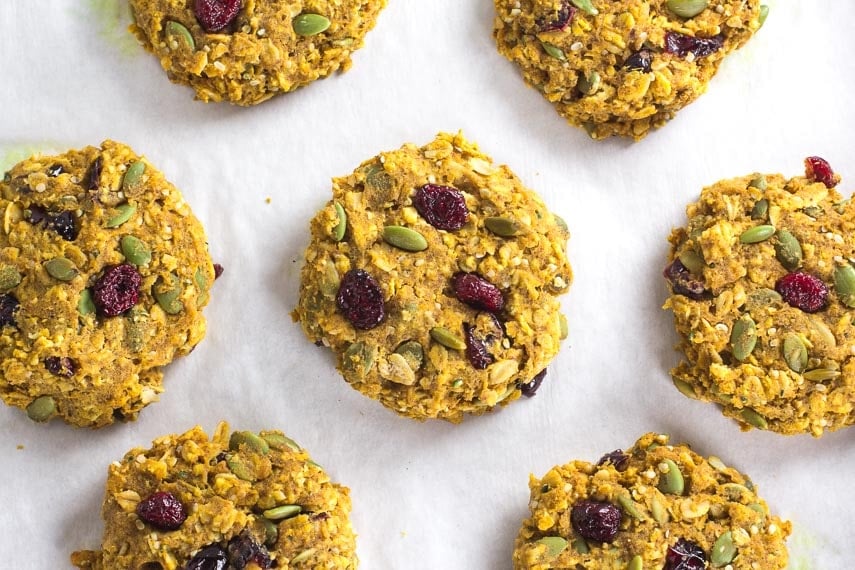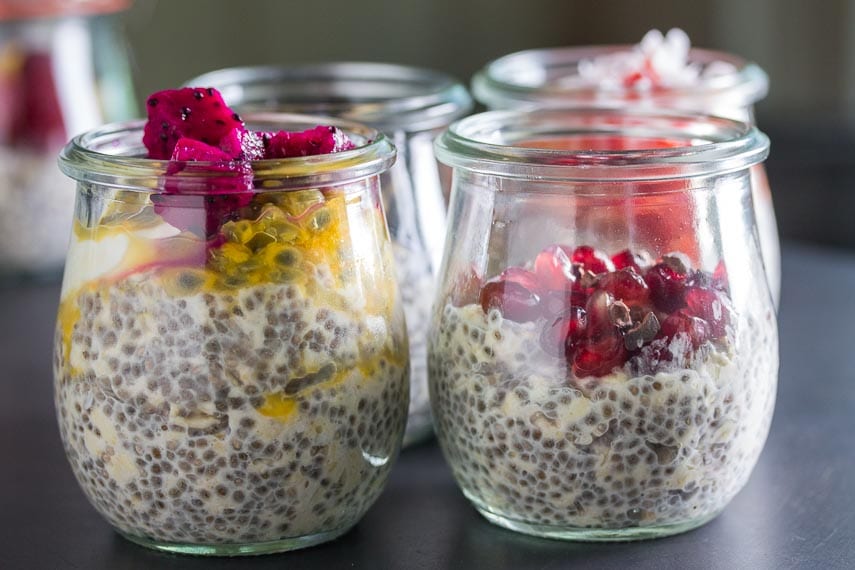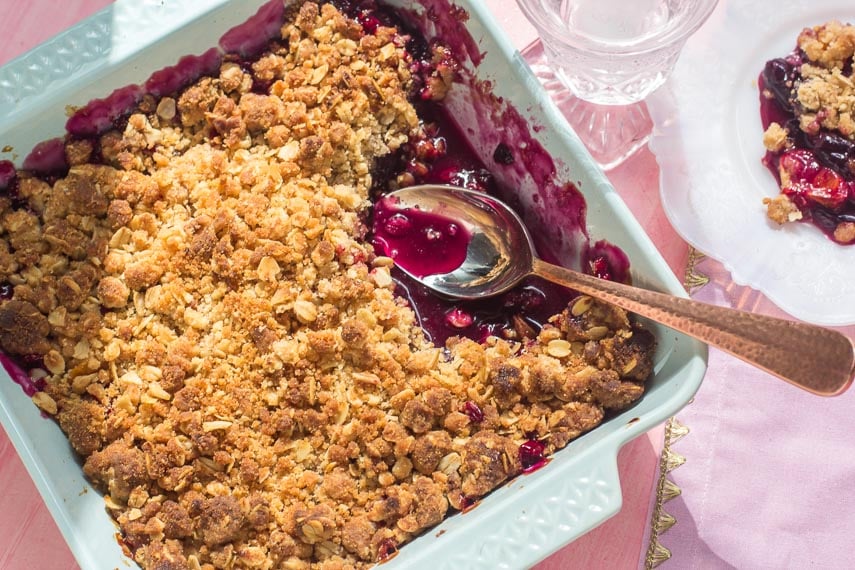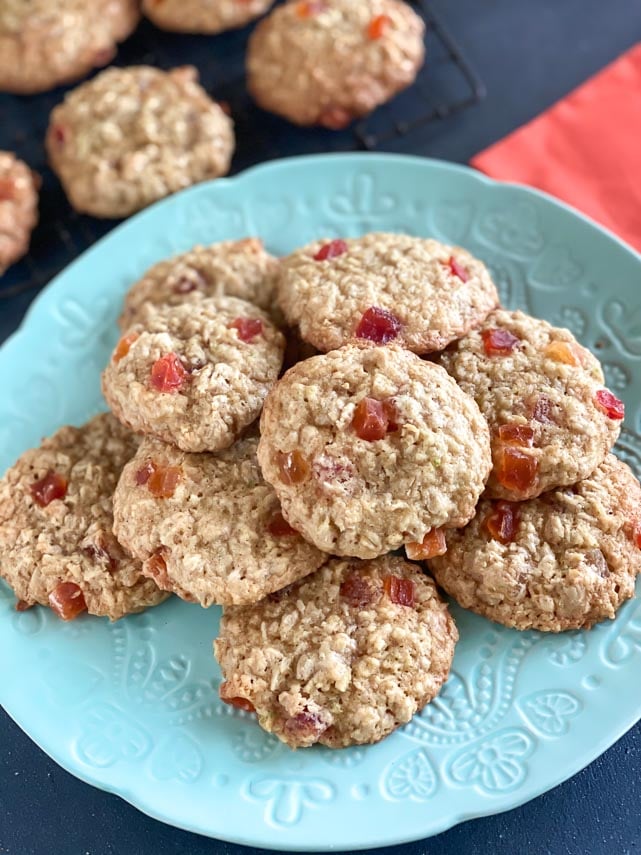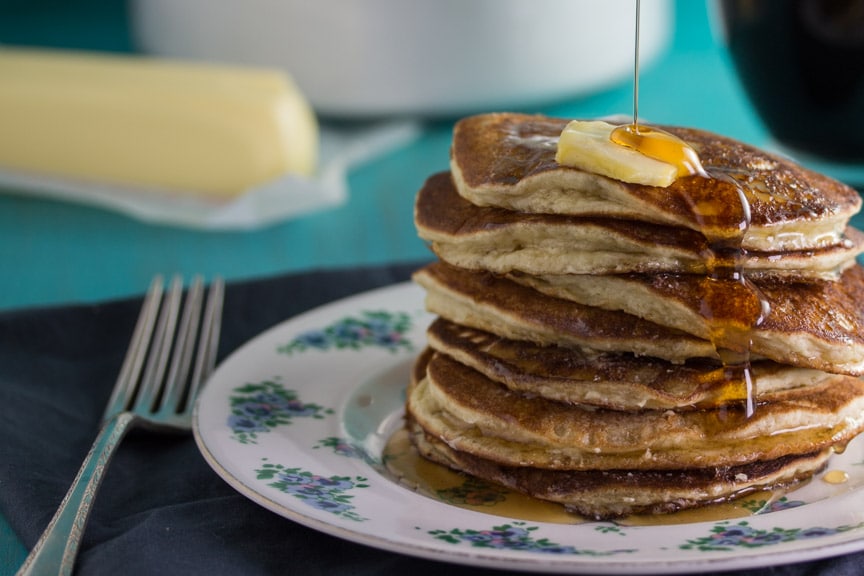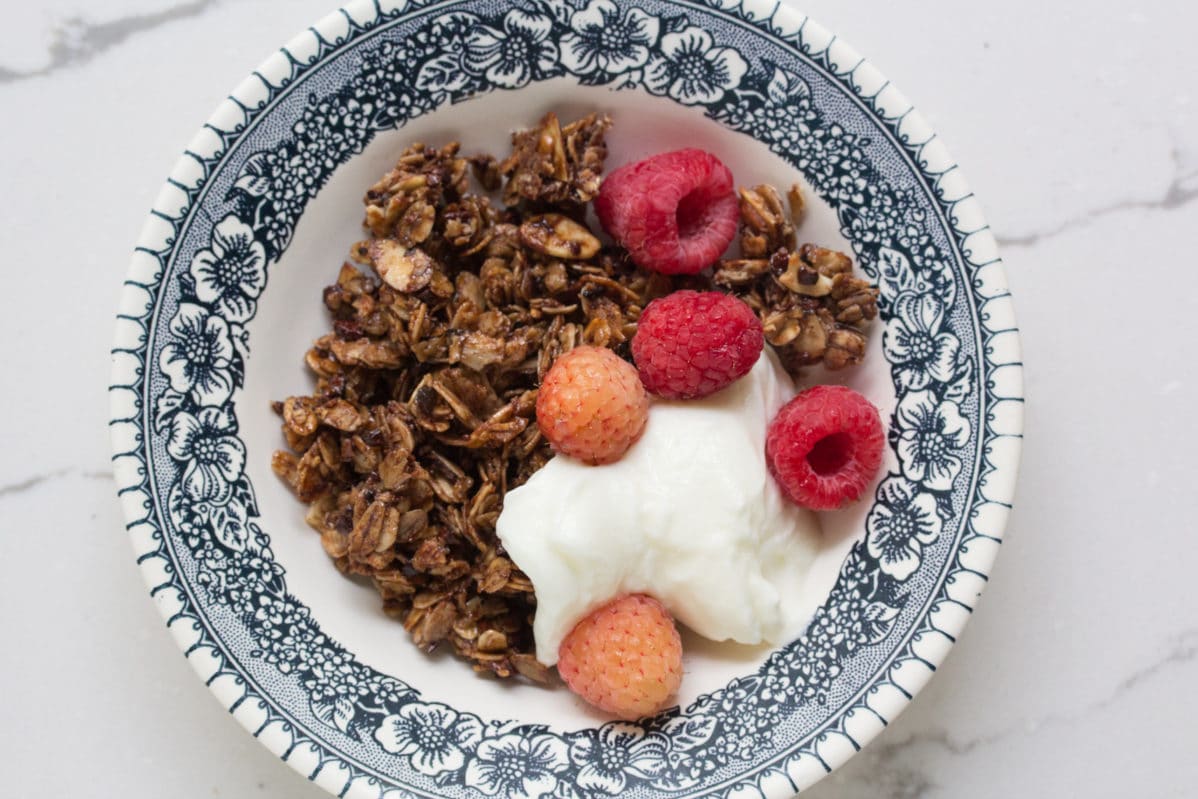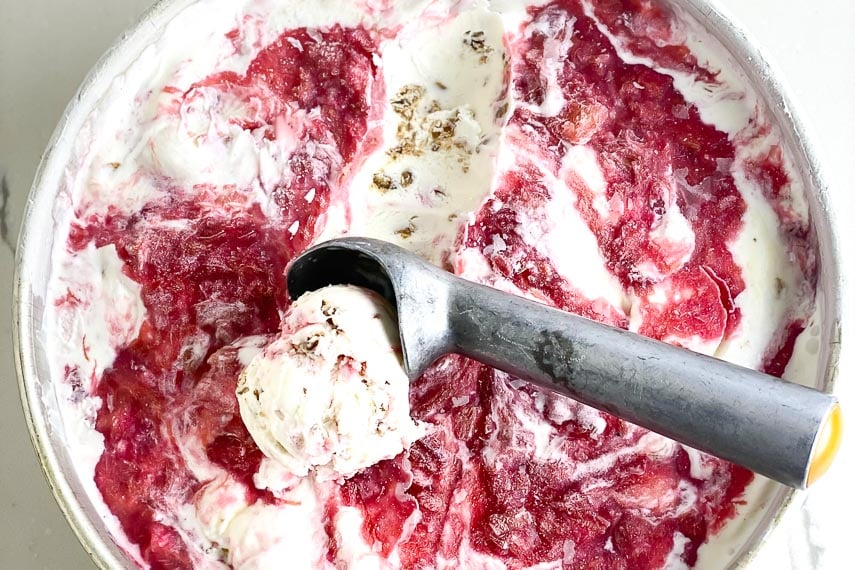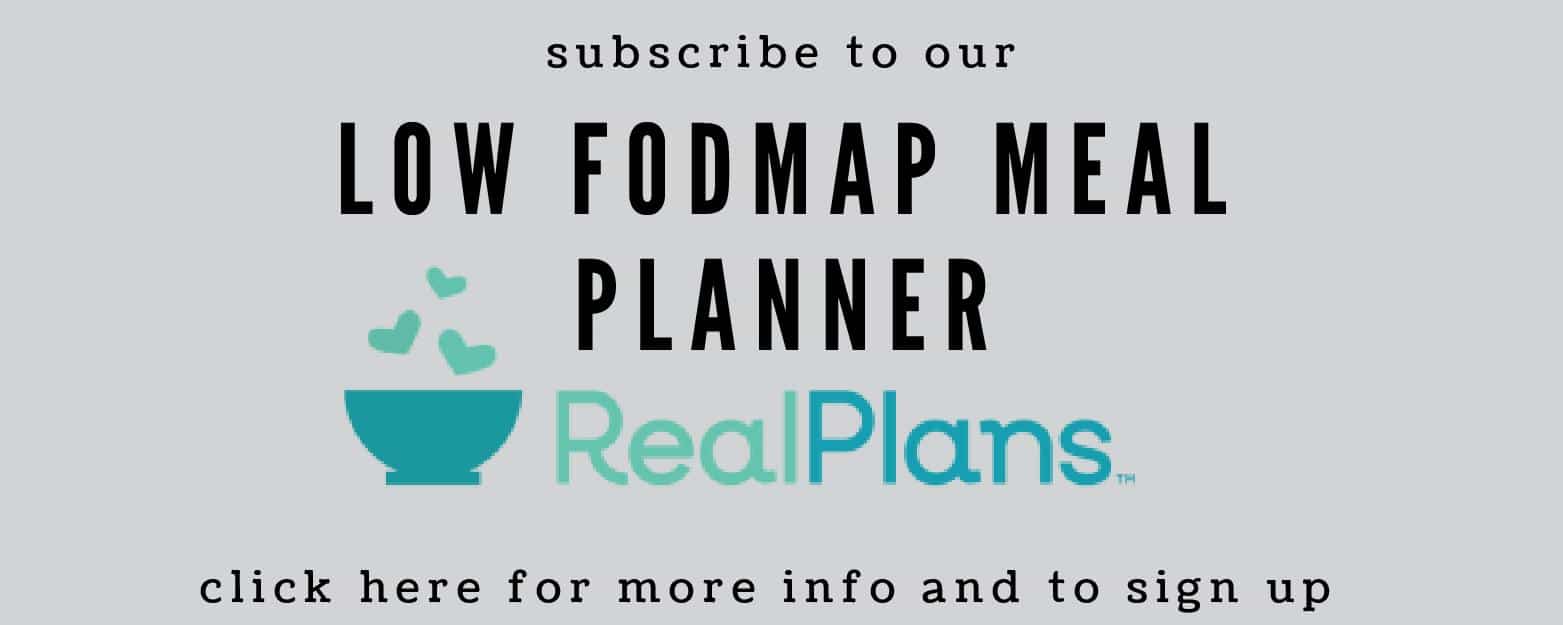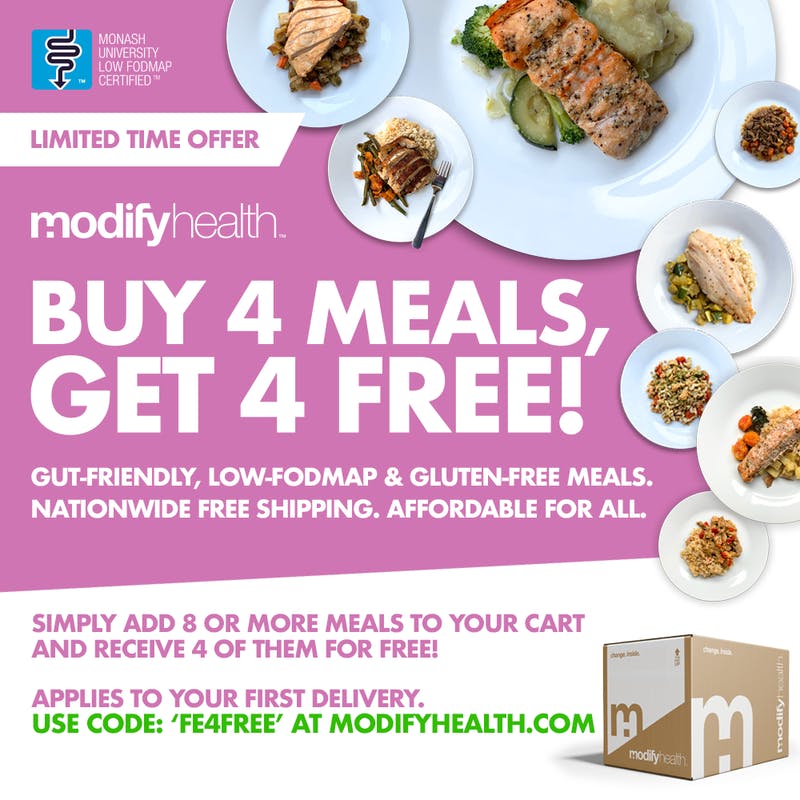Are oats low FODMAP? Yes, oats are low FODMAP and you can enjoy bowls of oatmeal, oatmeal cookies, and use oats in cooking and baking.
This article explains the ins and outs of oats in relation to FODMAPs. You can have oats while following the low FODMAP diet, even during the Elimination Phase.
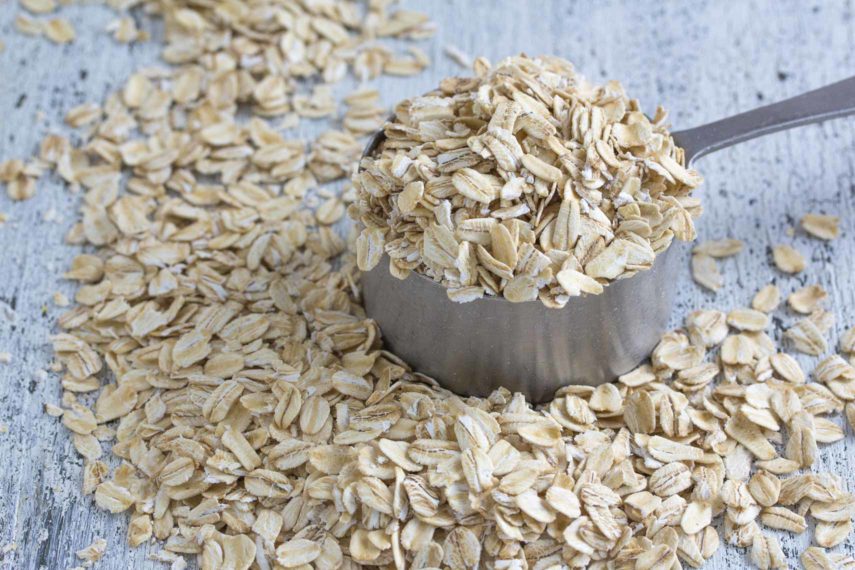
Oats are everywhere! In granola recipes, overnight oat recipes, used as a potential bulk ingredient in savory recipes like meatloaf and of course, used to make that classic warm bowl of old-fashioned oatmeal. You can have all of these while following the low FODMAP diet.
Oats Are Lab Tested and Certified Low FODMAP
Oats have been lab tested by both Monash University and FODMAP Friendly. Brands, such as Quaker Oats, have been lab tested, and several generic oat sources have been tested. Oats have been lab tested for FODMAPs in various forms, such as the most common rolled oats (also called old-fashioned oats), as well as steel cut oats, quick oats, 1-minute oats, instant oats, and more.
The results from Monash University lab testing are followed by “(M)”; the results from FODMAP Friendly lab testing are followed by “(FF)”:
NOTE: Quaker dropped their Monash certification, but the content of the products remain the same. As of this writing, the following low FODMAP serving size still apply, even though you will not find Quaker oat products in the Monash University app.
- Quaker®Oats Steel Cut Oats, regular and organic: ¼ cup uncooked (40 g) low FODMAP serving. No upper limit given. (M)
- Quaker®Oats Old Fashioned Oats, regular: ½ cup uncooked (40 g) low FODMAP serving. No upper limit given. (M)
- Quaker®Oats Old Fashioned Oats, Organic: ⅓ cup uncooked (34 g) low FODMAP serving. No upper limit given. (M)
- Quaker®Oats Quick 1-Minute Oats, regular: ½ cup uncooked (40 g) low FODMAP serving. No upper limit given. (M)
- Quaker®Oats Quick 1-Minute Oats, Organic: ½ cup uncooked (44 g) low FODMAP serving. No upper limit given. (M)
- Quaker®Oats Steel Cut Quick 3-Minute Oats: ⅓ cup uncooked (45 g) low FODMAP serving. No upper limit given. (M)
- Quaker®Oats Instant Oatmeal, regular and organic: 1 packet (28 g). (M)
- Quaker®Oats Gluten-Free Instant Oatmeal: 1 packet (35 g). (M)
- Oat Milk: Oat milk FODMAP content has been shown to vary depending on where test oat milks were sourced. Monash has tested brands in the UK and the US. Low FODMAP serving sizes vary; UK 140 ml low FODMAP serving (M); US 104 ml low FODMAP serving. No low FODMAP serving per FODMAP Friendly (FF). Please consult apps for
- Oat Flakes: 50 g low FODMAP serving size (M). FYI the image in the Monash app shows rolled oats.
- Uncooked Quick Oats: 23 g low FODMAP serving size (M).
- Uncooked Rolled Oats: up to 65 g low FODMAP serving size (M).
- Cooked Rolled Oats: up to 60 g low FODMAP serving size (M).
- Uncooked Oat Groats: l60 g ow FODMAP serving size (M).
- Oat Bran, unprocessed, uncooked: 22 g low FODMAP serving size (M). 22 g low FODMAP serving size; max serving size 55 g (FF).
Lab Tested and Certified Products Containing Oats
This article is mostly focused on oats in their raw or whole grain state. In addition, both Monash University and FODMAP Friendly have lab tested many products containing oats. Please consult their smartphone apps for more information. Below is just a sampling of what you can eat, even during Elimination.
- Oat & Honey Granola Bar (US): 11 g low FODMAP serving (M).
- Whole Grain Oat Biscuit Breakfast Cereal (UK): 50 g ow FODMAP serving size (M).
- Better Blends Oat & Collagen Protein, chocolate and vanilla: 40 g low FODMAP serving size (M).
- Gut Feelings Oat Bowl, Chai Latte: 119 g low FODMAP serving size (M).
- Gut Feelings Oat Bowl, PB&J: 131 g low FODMAP serving size (M).
- Oatcake, plain: UK sourced, 36 g low FODMAP serving size (M).
Monash University on Oats
We spoke with the researchers at Monash University about the oat entries in their app, both branded (Quaker) and generic, as there are, what appear to be, inconsistencies: many of their Quaker oat app entries are not the same as the generic oats, for the same raw oat product. Here is their response (underline for emphasis is ours):
“…the Quaker oats (results) are based on their specific product(s) of which we tested 3 samples from different batches to obtain this result.
The generic oats are based on a myriad of samples to find an average. As every country has numerous brands, we always encourage individuals to use the app as a guide but test their own tolerance.”
The important takeaway here, is that lab tests are just snapshots in time. They represent only what was tested in those particular test batches. Where were these oats grown? Under what conditions? What variety of oat? How were they processed?
When it comes to food, inconsistency in nutritional and FODMAP content is more common than not, to the point of being expected, even by the researchers conducting the testing.
Oat Primer

This section addresses all of the whole grain oat products from groats to steel cut, instant to quick – and all the various rolled oats.
What is a Groat?
Sometimes the whole oat grain is called a groat, along with buckwheat groats, wheat, rye and barley groats. In other words, the term groat references the fact that these are whole grains.
When we buy oat groats at the supermarket, they are almost always hulled (after being steamed, to facilitate the hulling process) but are still considered “whole” grains as they have the bran, germ and endosperm intact, which you can see in the image below, courtesy of the Oldways website that we love referring to for interesting and reputable information.

But let’s focus on the kinds of oats most often called for in recipes. A well-written recipe will specify what kind of oats were used when the recipe was developed and list “old-fashioned rolled oats” or “rolled oats” (which are the same thing) and if the recipe just says “oats”, assume that the person means these as well. They are not the same, however, as groats, steel cut oats, quick oats or instant oats. If the recipe requires these, it will most likely specify.
Below we take you through the difference between all of these types of oats. All of these oats described below begin with a steaming process so that the very hard outer hull can be removed before reaching the consumer.
Oat Groats
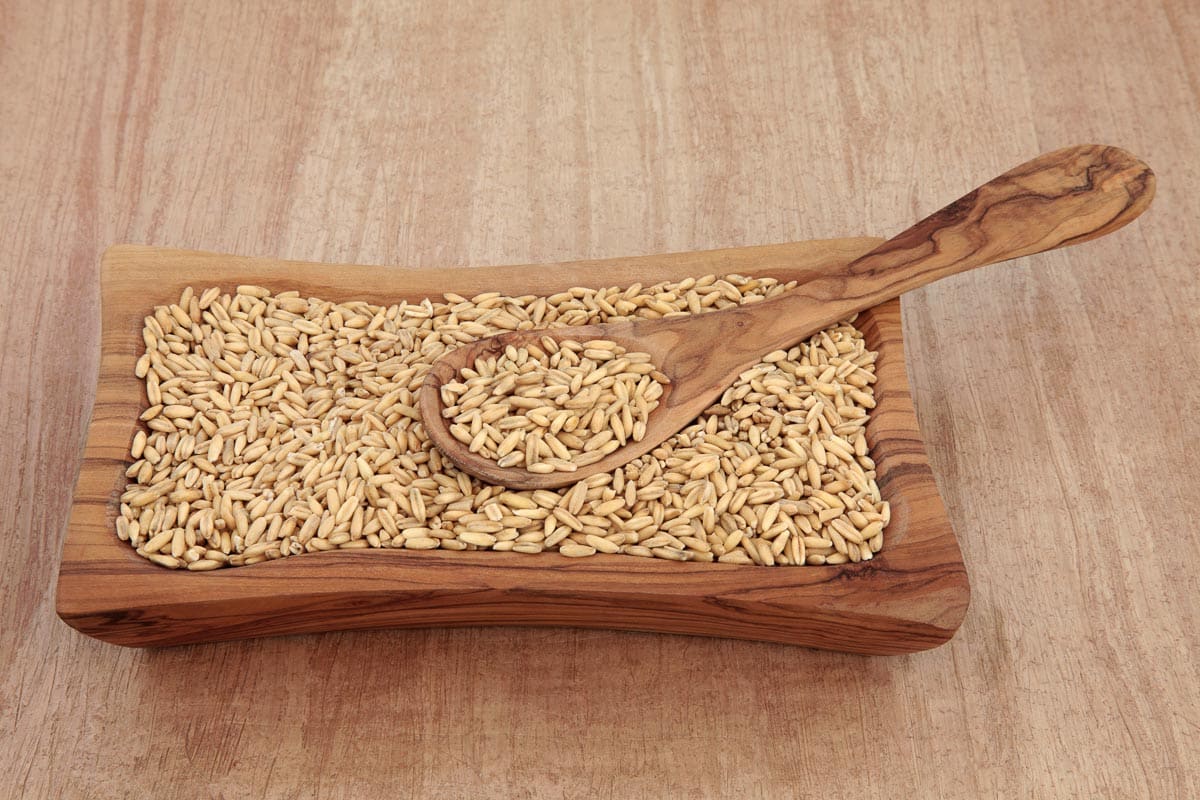
These get their own entry on the Monash app where it is explained that they are given the low FODMAP Green Light at ¼ cup or 60 g. Groats, as mentioned before, are the whole grain, steamed and hull removed. Typically they would be eaten as a savory grain, as in a grain bowl or as a side dish.
Steel Cut Oats
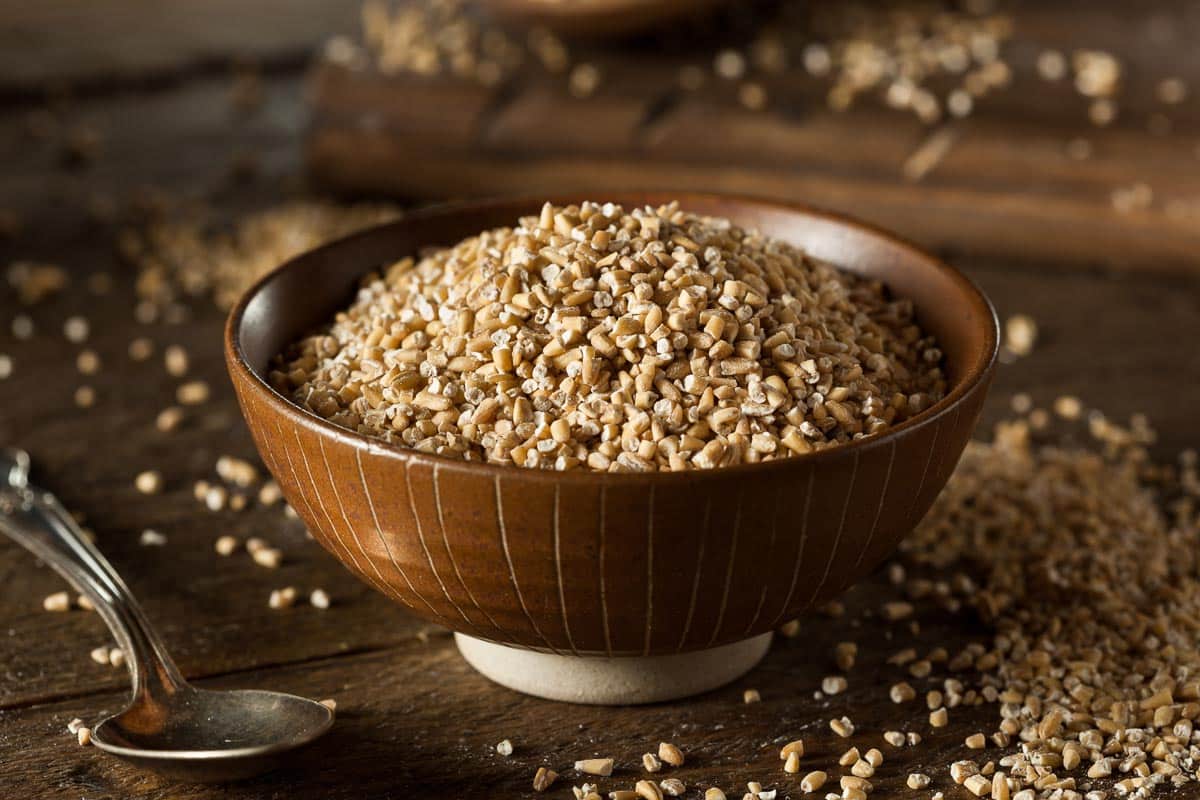
Steel cut oats are also sometimes referred to as Scotch Oats, Irish Oats or Pinhead Oats. Monash University has lab tested and certified three-different versions of Quaker brand steel-cut oats, which all have a 40 g low FODMAP serving size.
Steel cut oats are oats that have not been rolled and are therefore very 3D in form. When we buy steel cut oats at the market they have been steamed, hulls removed, and then have usually been cut into thirds, which makes them small and nugget-like. Their cooked texture is heartier due to their rugged raw texture and cooking time is longer – about 20 to 30 minutes when making them as a hot cereal.
Rolled Oats/Old-Fashioned Oats
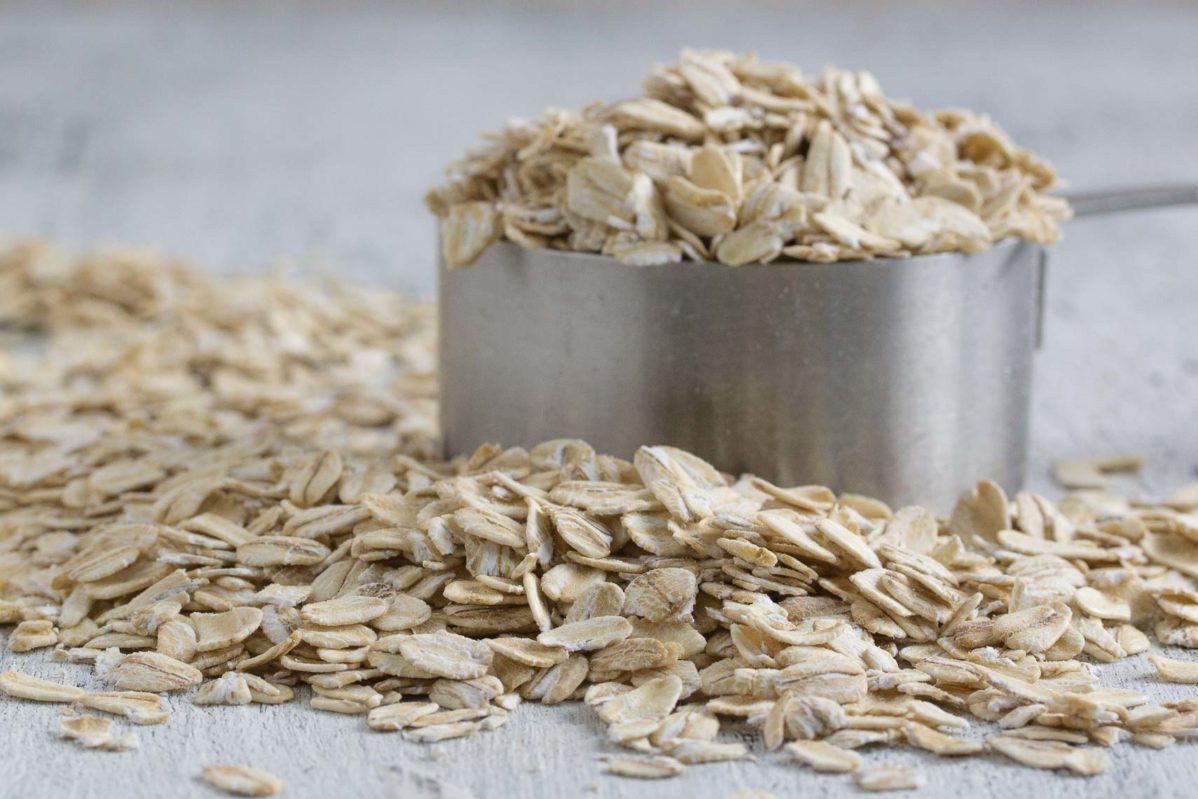
Rolled oats begin with the whole grain that has been steamed and hull removed, then they are put through heavy rollers, which compress them into their characteristic flattened shape, sometimes referred to as “flakes” in the industry, as in “oat flakes”. If a recipe calls for “oats”, use these.
Rolled oats can be cooked to prepare oatmeal in about 5 to 10 minutes.
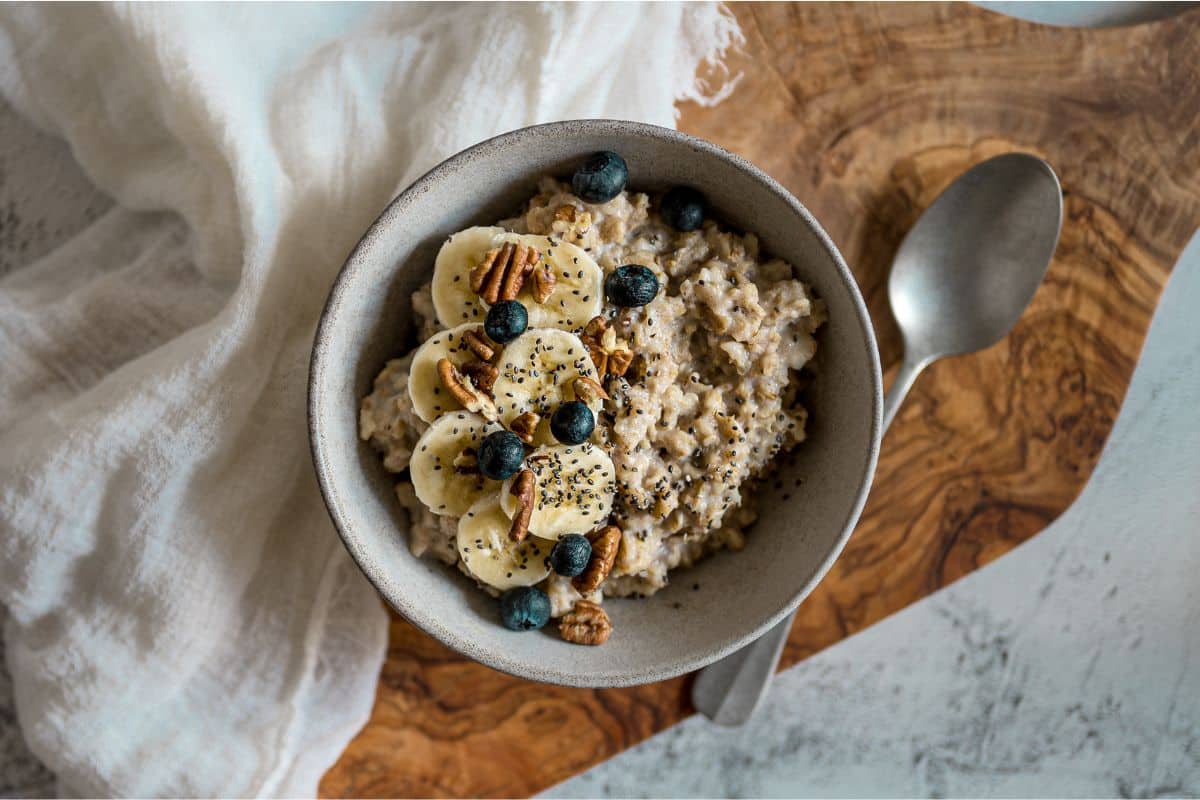
PS: Some are thicker than others, and sometimes the package will state this, calling them “thick” or “thick style”. These thicker ones typically do not do well in in baking and cooking, unless the recipe was developed for them. Please reference your apps for specifics on serving sizes, as they vary.
Quick Oats
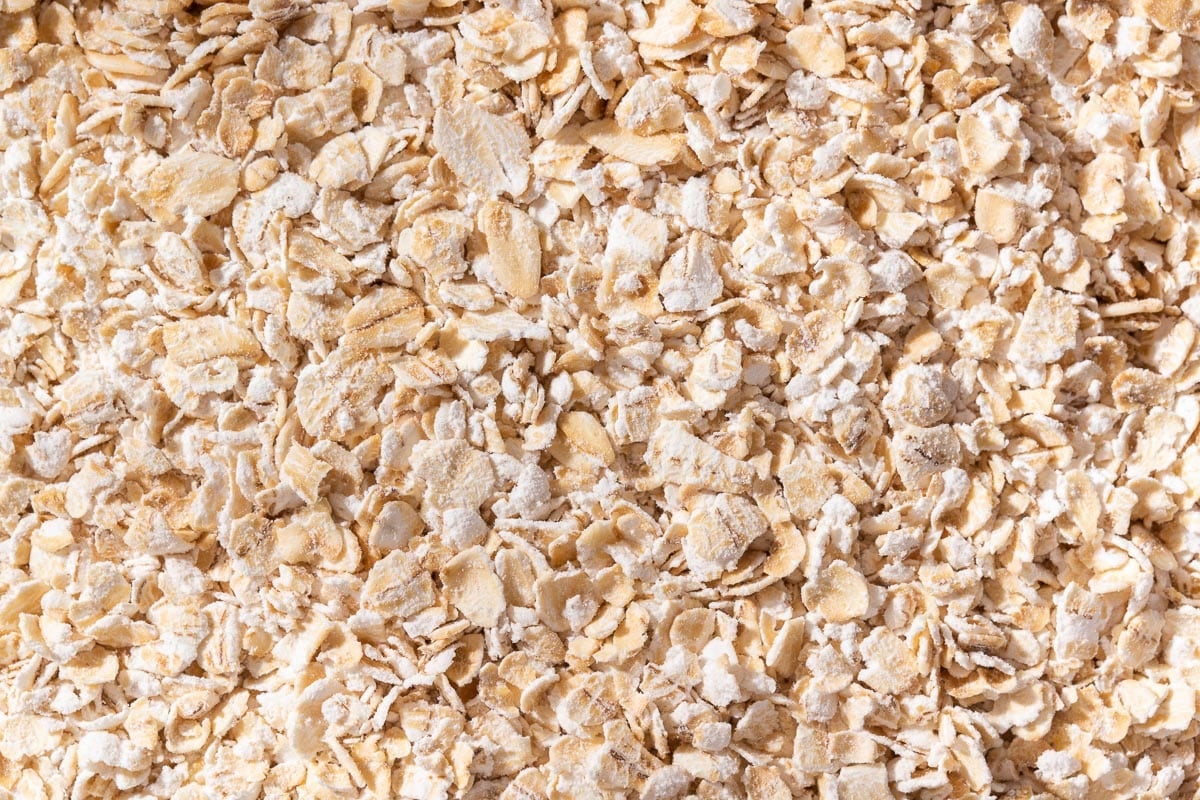
Quick oats are the same as traditional rolled oats in that they have been steamed, hull removed and rolled but they have then been chopped into slightly smaller pieces so as to cook more quickly, hence their name – typically in about 1 minute. When you measure them right out of the package you will notice that they are a bit “dusty” as some of the oat pieces are very small and this powdery texture will change the results of your cookies, granolas or whatever you are making that has called for traditional rolled oats. As with all recipes, always use the ingredients that are called for.
Instant Oats
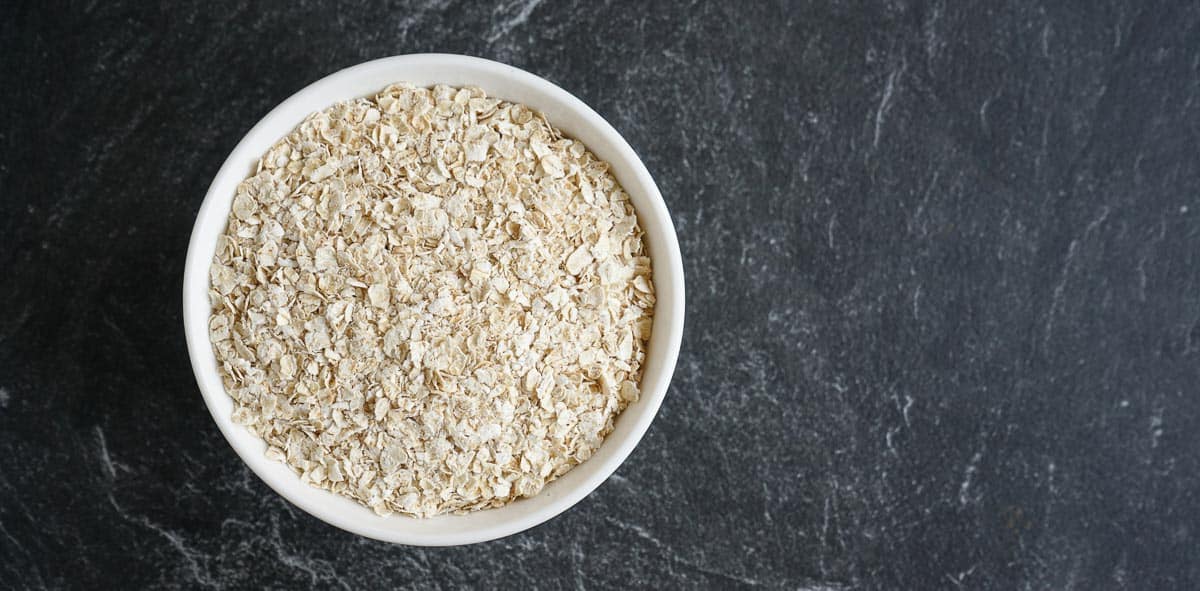
Instant oats have been rolled thinner than the ones described above and chopped into even tinier pieces. They are quite powdery and typically used for a quick hot bowl of oatmeal but do not usually crop us as an ingredient in baking. If you were pulverizing oats in a blender for a smoothie, these would be fine to use but note that they measure out more densely than rolled oats, and the FODMAPs would likely be more concentrated as well.
Instant oats can be cooked in the microwave in a minute or two, and have a very soft texture.
Frequently Asked Questions
Yes, many different kinds of oats, and oat products, have low FODMAP serving sizes. Please refer to your Monash University and FODMAP Friendly smartphone apps for up-to-date information.
In the U.S., oats are the raw product, while oatmeal is cooked, as in a bowl of oatmeal, or an oatmeal cookie. Monash University uses the terms interchangeably.
There are various answers all over the internet. We have based our information on the oat professionals – Quaker Oats. We have explained the differences of all the oats above in our Oat Primer section.
According to Quaker Oats, and dietitians, various kinds of oats (steel cut, rolled, quick, etc.) have such similar nutritional profiles that they are all considered nutritious. They are all heart healthy and contain fiber. While some sources state that steel cut contain more fiber, other sources dispel that notion. Eat the oats you like, and that you have time to cook.
Oats can be gluten-free, but there is a complex answer, which we have addressed below in its own section, Oats: Gluten-Free or Not?
No, GMO foods are not a FODMAP issue. There are oats on the market that are verified non-GMO; just read the labels.
Only your body can answer this question. Many people digest oats well, while others experience difficulty. The best way to assess this is through a structured elimination diet.
Oats Are Nutritious

Oats are a whole grain that can add flavor, texture, and fiber to your low FODMAP diet. They are considered a source of carbohydrates and quality protein, with good amino acid balance as well. Oat contains a high percentage of oat lipids especially unsaturated fatty acid, minerals, vitamins and phytochemicals.
Oats: Gluten-Free or Not?
Which brings us to a common and great question about whether oats are naturally gluten-free or not. You will find some recipes on FODMAP Everyday® that contain oats and yet are labeled as gluten-free, but you will also see in the ingredient list that we specify gluten-free oats. This is not so much for FODMAPers as it is for celiacs and those with oat sensitivity.
There are two main reasons why oats are included in articles and lists that discuss gluten:
- Avenin is a protein found in oats that is similar to gluten and has been shown in some studies to activate gluten-reactive T cells in vitro. In actual people, some tests have shown that a small percentage of celiac patients will react to oats.
- There can also be cross-contamination of oats from wheat or other gluten containing grains during harvesting and processing.
Anecdotally, for people with gluten intolerance, some have negative reactions to oats and others do just fine. Personally I can eat oats in small amounts, but I have definitely noticed that if I eat them a few days in a row that I experience heaviness in my abdomen. It doesn’t present as pain, but rather as a general heavy or stuffed feeling that I do not like. It’s like a bloating from the inside, even if it isn’t accompanied by visible bloating on the outside (although that happens sometimes, too). It feels like my GI system is cloggy. Yes, I know that isn’t a scientific term, but part of assessing your reactions to FODMAPs in foods is as much an art as a science. What is true for one person could be very different for you – and it is important for you to learn how to listen to your own body.
It is also important to note that different countries handle the presence of gluten and avenin differently. We discussed this with Joanna Baker, who practices in Australia. She said that in Australia and New Zealand there is no such thing as gluten-free oats, which puzzled me, so I asked her to explain. Here is what she said:
“Our cut off is 3ppm & yours (the U.S) is 20ppm. So we are stricter. Also, avenin the protein in oats, is considered to be a gluten protein. No oats are allowed to be labeled GF regardless of processing & it’s advised if you have Coeliac you avoid all oats regardless of processing…the justification for us is that ⅕ with Coeliac react to avenin the same as other gluten grains. So we say that’s high enough to avoid. Some will do an “oats challenge” where they eat wheat free oats for 6-12 weeks & then have a gastroscopy to assess for villi damage”
So, if you have been buying gluten-free oats and are still experiencing symptoms, perhaps your sensitivity goes beyond what the packaging and labeling allows.
How to Buy
Buying oats in bulk can typically be less expensive. Just buy what you need, which ensures that your stash stays fresh. When we want gluten-free oats, we buy pre-packaged with that designation such as Bob’s Red Mill. Again, we try to buy small amounts so that turnover is swift.
How to Store
Store oats in airtight containers at room temperature in a cool, dark place. While we do freeze some bulk products, oats are not one of them. They take on moisture, which might be okay if making oatmeal, but not okay when incorporated into a cookie recipe.
The Takeaway
Oats can be part of a low FODMAP diet, even during the Elimination Phase. Work with your Registered Dietitian to assess your own tolerances and then take advantage of our oat based recipes.
Low FODMAP Recipes Containing Oats
Here are just a few low FODMAP recipes. Use our Search function to find more!

- One-Bowl Peanut Butter Chocolate Chunk Oatmeal Cookies with Raisins
- Pumpkin Cranberry Oat Breakfast Cookies
